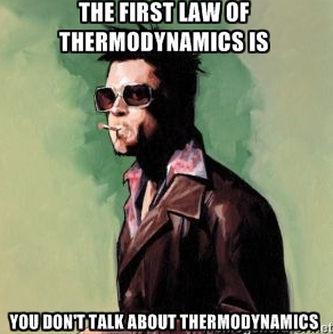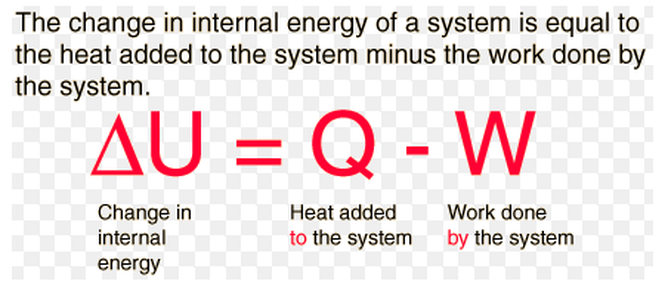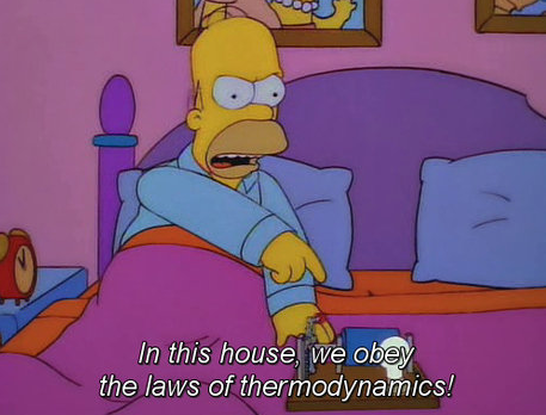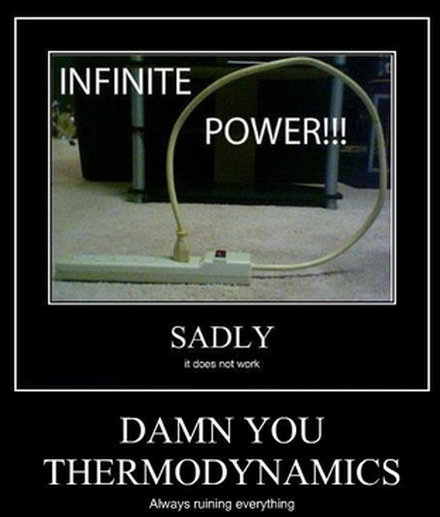|
|
Before I delve into what I like to think is a very simplified explanation of The Energy Balance Equation, I’m going to hit you with a short little story of my first encounter with the energy balance equation and how it really lit the fire for my never ending quest to comprehend all things related to human physiology.
The year: Two thousand and twelve (2012).
At this point in my life I was somewhere between full on perma-bulking 215 pound meathead gym rat and sleep deprived aspiring mechanical engineering student.
Actually, I’m still most of those things, except now roughly 60 pounds lighter. But that’s another story.
It’s late August which means another semester of university classes has just gotten underway and I find myself in the first challenging engineering course in the curriculum.
Thermodynamics I for Mechanical Engineers.
Up until this point, engineering had seemed like a never ending onslaught of calculus, differential equations, linear algebra; essentially all the boring math you’ll never use in your life.
So finally, an opportunity to see what this real engineering stuff is all about.
Fast forward a few weeks into the course.
I’m getting crushed.
I mean slammed.
So far it’s been 1 general equation with lecture after lecture about the mathematics and derivation behind the equation.
Not exactly what I pictured as real engineering.
And I can’t seem to grasp the concepts if my life depended on it.
Overall, I didn’t feel too bad because I wasn’t the only one who felt lost; in fact my comprehension of the material seemed to be at about the same level as the other bozos in my class. (If you bozos are reading this, I love you guys haha)
Three weeks into the course and all we’ve covered was a single equation: The First Law of Thermodynamics.
For those who don’t know it, this is what it looks like:
The year: Two thousand and twelve (2012).
At this point in my life I was somewhere between full on perma-bulking 215 pound meathead gym rat and sleep deprived aspiring mechanical engineering student.
Actually, I’m still most of those things, except now roughly 60 pounds lighter. But that’s another story.
It’s late August which means another semester of university classes has just gotten underway and I find myself in the first challenging engineering course in the curriculum.
Thermodynamics I for Mechanical Engineers.
Up until this point, engineering had seemed like a never ending onslaught of calculus, differential equations, linear algebra; essentially all the boring math you’ll never use in your life.
So finally, an opportunity to see what this real engineering stuff is all about.
Fast forward a few weeks into the course.
I’m getting crushed.
I mean slammed.
So far it’s been 1 general equation with lecture after lecture about the mathematics and derivation behind the equation.
Not exactly what I pictured as real engineering.
And I can’t seem to grasp the concepts if my life depended on it.
Overall, I didn’t feel too bad because I wasn’t the only one who felt lost; in fact my comprehension of the material seemed to be at about the same level as the other bozos in my class. (If you bozos are reading this, I love you guys haha)
Three weeks into the course and all we’ve covered was a single equation: The First Law of Thermodynamics.
For those who don’t know it, this is what it looks like:
Yeah.
I know.
I’m sittin in class trying to figure out what the hell Q is and when the work is being done ON the system or BY the system.?
???
Then gradually I started to understand the concept.
But couldn’t put it in terms that I could fully grasp.
Until I stumbled upon an article on a bodybuilding website that mentioned ENERGY BALANCE.
So I put the pieces together.
It was at that moment I realized, “This thermodynamics stuff doesn’t only apply to engines, compressors, and turbines. It applies to all forms of mechanical energy.”
And what better engine to use mechanical energy than the human body?
It finally clicked.
I got it.
From that moment on in all of my subsequent mechanical engineering courses, I’ve been able to comprehend the material by putting it in terms that I know and can relate to.
I love it when people question my ability to solicit nutrition and training advice due to my background in mechanical engineering as opposed to having studied something like kinesiology or nutrition.
It's funny because in most aspects, I have more credibility and training in bio-mechanics and human physiology than personal trainers and dietitians do.
But that’s beside the point.
I’ll get off my high horse and wrap up this little anecdote here and get into this whole energy balance thing.
I know.
I’m sittin in class trying to figure out what the hell Q is and when the work is being done ON the system or BY the system.?
???
Then gradually I started to understand the concept.
But couldn’t put it in terms that I could fully grasp.
Until I stumbled upon an article on a bodybuilding website that mentioned ENERGY BALANCE.
So I put the pieces together.
It was at that moment I realized, “This thermodynamics stuff doesn’t only apply to engines, compressors, and turbines. It applies to all forms of mechanical energy.”
And what better engine to use mechanical energy than the human body?
It finally clicked.
I got it.
From that moment on in all of my subsequent mechanical engineering courses, I’ve been able to comprehend the material by putting it in terms that I know and can relate to.
I love it when people question my ability to solicit nutrition and training advice due to my background in mechanical engineering as opposed to having studied something like kinesiology or nutrition.
It's funny because in most aspects, I have more credibility and training in bio-mechanics and human physiology than personal trainers and dietitians do.
But that’s beside the point.
I’ll get off my high horse and wrap up this little anecdote here and get into this whole energy balance thing.
So What is the Energy Balance Equation?
I’m going to be as straight forward and simplistic in my explanation of all this scienc-ey lingo mumbo jumbo as I possibly can.
As I stated about, the energy balance equation is the First Law of Thermodynamics.
You may be familiar with this as “energy cannot be created or destroyed.”
And that phrase looks something like this:
I’m going to be as straight forward and simplistic in my explanation of all this scienc-ey lingo mumbo jumbo as I possibly can.
As I stated about, the energy balance equation is the First Law of Thermodynamics.
You may be familiar with this as “energy cannot be created or destroyed.”
And that phrase looks something like this:
Where Q means energy in.
W means energy out.
And ΔU means change in total internal energy.
Stay with me here, I’ll break it down further.
This is how energy looks in scientific terms.
But it really translates to this:
W means energy out.
And ΔU means change in total internal energy.
Stay with me here, I’ll break it down further.
This is how energy looks in scientific terms.
But it really translates to this:
Let’s break this down even further.
Since energy cannot be created or destroyed, it has to be accounted for in some fashion or form. Here the differences in energy in and energy out show up as changes in the body’s internal energy stores.
If energy intake is less than the energy output, the body will utilize stored energy within the body and there will be a loss of tissue (fat, muscle, etc.)
This just means if you consume fewer calories than you expend throughout the day, such as in a fat loss program, your body will used stored energy in the form of mostly stored fat to provide energy to the body.
Since energy cannot be created or destroyed, it has to be accounted for in some fashion or form. Here the differences in energy in and energy out show up as changes in the body’s internal energy stores.
If energy intake is less than the energy output, the body will utilize stored energy within the body and there will be a loss of tissue (fat, muscle, etc.)
This just means if you consume fewer calories than you expend throughout the day, such as in a fat loss program, your body will used stored energy in the form of mostly stored fat to provide energy to the body.
|
|
A Detailed Look at the Energy IN Side of the Equation
This part (Q, or Energy In) is the most simplistic part of the equation and there aren’t too many variables of certain aspects that can change it.
Energy in represents the total number of calories that you ingest each day from nutrients such as carbohydrates, protein, fat, fiber, and alcohol.
That’s somewhat of a basic explanation too, because all foods are not digested with identical efficiencies. Most proteins digest at .95 efficiency, fat at .97, and carbs are typically 80% efficient based on the fiber content of the carb.
This means that the calorie value can vary a bit depending on the specific macro nutrient and it’s source.
There really is no way to accurately track the exact number of calories after ingestion and digestion of protein, carbs, and fat, but at this time it’s the most useful metric available to account for energy intake by the body.
*Important to Note This doesn’t deny the efficacy and make the energy balance invalid. This means that the energy balance equation is a bit more complicated and more involved than most people know.
This part (Q, or Energy In) is the most simplistic part of the equation and there aren’t too many variables of certain aspects that can change it.
Energy in represents the total number of calories that you ingest each day from nutrients such as carbohydrates, protein, fat, fiber, and alcohol.
That’s somewhat of a basic explanation too, because all foods are not digested with identical efficiencies. Most proteins digest at .95 efficiency, fat at .97, and carbs are typically 80% efficient based on the fiber content of the carb.
This means that the calorie value can vary a bit depending on the specific macro nutrient and it’s source.
There really is no way to accurately track the exact number of calories after ingestion and digestion of protein, carbs, and fat, but at this time it’s the most useful metric available to account for energy intake by the body.
*Important to Note This doesn’t deny the efficacy and make the energy balance invalid. This means that the energy balance equation is a bit more complicated and more involved than most people know.
A Detailed Look at the Energy OUT Side of the Equation
This is where folks tend to make mistakes when applying the energy balance equation and it’s a bit more complicated than what it appears on the surface.
Energy out is the mechanical work (W, energy out) produced by your body.
There are 4 primary aspects of the energy out side of the equation which are:
· Resting Metabolic Rate RMR
· Thermic Effect of Food TEF
· Thermic Effect of Activity TEA
· Non Exercise Activity Thermogenesis NEAT
The important thing to note here is that none of these aspects are static in any way. They are constantly changing and are impacted heavily by foods consumed, activity, environment, stress levels, etc. It’s a very dynamic balance.
This is where folks tend to make mistakes when applying the energy balance equation and it’s a bit more complicated than what it appears on the surface.
Energy out is the mechanical work (W, energy out) produced by your body.
There are 4 primary aspects of the energy out side of the equation which are:
· Resting Metabolic Rate RMR
· Thermic Effect of Food TEF
· Thermic Effect of Activity TEA
· Non Exercise Activity Thermogenesis NEAT
The important thing to note here is that none of these aspects are static in any way. They are constantly changing and are impacted heavily by foods consumed, activity, environment, stress levels, etc. It’s a very dynamic balance.
Don’t get muscle and fat confused: They are not identical
One major issue I’ve seen that throws people off has to do with the difference in losing/gaining fat mass and muscle mass.
The old rule of thumb is you create a 3500 calorie per week deficit, you will lose exactly one pound.
Because energy wise (calorie wise), one pound of fat is equal to 3500 calories.
This assumes that 100% fat loss is occurring when in a calorie deficit such as dieting.
This is hardly ever the case. Unless you’re extremely genetically gifted, a calorie deficit entails some loss of muscle mass of some kind. This loss in muscle mass is also dependent on a lot of variables such as dieting, training, sleep, stress, etc.
One major issue I’ve seen that throws people off has to do with the difference in losing/gaining fat mass and muscle mass.
The old rule of thumb is you create a 3500 calorie per week deficit, you will lose exactly one pound.
Because energy wise (calorie wise), one pound of fat is equal to 3500 calories.
This assumes that 100% fat loss is occurring when in a calorie deficit such as dieting.
This is hardly ever the case. Unless you’re extremely genetically gifted, a calorie deficit entails some loss of muscle mass of some kind. This loss in muscle mass is also dependent on a lot of variables such as dieting, training, sleep, stress, etc.
The Energy Balance Equation is Not a Static Equation
If you’re going to take away anything from this article, let it be the information from this part here.
Every factor of the energy in part of the equation (BMR + TEF + TEA + NEAT) can change moment to moment based on the individual’s current environment.
Make sure you’ve read that sentence outloud to yourself a few times to fully understand.
Folks tend to assume that if their daily maintenance calories is exactly 2500 calories and they start eating 500 calories less a day (or increase activity by 500 calories a day) they should lose exactly 1 pound of fat per week in a linear fashion. (500*7=3500 calories)
On paper, this formula checks out.
But like I stated above, the BMR, TEF, TEA, and NEAT are hugely considerable factors on how much energy is actually being expended.
And there’s also the fact that the human body is exceptionally good at adapting to new situations based on survival.
If you reduce your caloric intake long enough, even if it’s just 5 days, your body will slow down it’s energy expenditure to compensate for the lack of energy coming in on the input side of the equation.
EXAMPLE:
When you lose weight, BMR goes down. This is due to reduced overall body weight (smaller bodies burn fewer total calories), but the adaptive component kicks in due to a change of hormones like leptin, insulin, nervous system output, activity, stress factors, and thyroid hormones.
The thermic effect of food (TEF) is directly related to the amount of food you consume. If you’re eating less, you’re burning less. It’s loosely around 10% of your overall calorie consumption. So if you eat 2500 calories per day and reduce it by 500 calories per day for a week, you’re burning 50 calories a day fewer through TEF alone. Now that previous maintenance of 2500 has been reduced to 2450 cal/day due to the adaptive component. So the assumption of a static 2500 cal/day maintenance is now invalid by the act of slightly reducing food intake.
One of the downsides of dieting (reducing calories) is that folks tend to move around less and be less active in general. Again, the adaptive component kicks in.
If there’s less energy coming in, the body will adapt on the output side of the equation. This is where you see the NEAT decline as energy levels plummet due to lack of calories coming in.
The same rules apply for weight gain and overeating as well. All of the components can changes considerably.
If you’re going to take away anything from this article, let it be the information from this part here.
Every factor of the energy in part of the equation (BMR + TEF + TEA + NEAT) can change moment to moment based on the individual’s current environment.
Make sure you’ve read that sentence outloud to yourself a few times to fully understand.
Folks tend to assume that if their daily maintenance calories is exactly 2500 calories and they start eating 500 calories less a day (or increase activity by 500 calories a day) they should lose exactly 1 pound of fat per week in a linear fashion. (500*7=3500 calories)
On paper, this formula checks out.
But like I stated above, the BMR, TEF, TEA, and NEAT are hugely considerable factors on how much energy is actually being expended.
And there’s also the fact that the human body is exceptionally good at adapting to new situations based on survival.
If you reduce your caloric intake long enough, even if it’s just 5 days, your body will slow down it’s energy expenditure to compensate for the lack of energy coming in on the input side of the equation.
EXAMPLE:
When you lose weight, BMR goes down. This is due to reduced overall body weight (smaller bodies burn fewer total calories), but the adaptive component kicks in due to a change of hormones like leptin, insulin, nervous system output, activity, stress factors, and thyroid hormones.
The thermic effect of food (TEF) is directly related to the amount of food you consume. If you’re eating less, you’re burning less. It’s loosely around 10% of your overall calorie consumption. So if you eat 2500 calories per day and reduce it by 500 calories per day for a week, you’re burning 50 calories a day fewer through TEF alone. Now that previous maintenance of 2500 has been reduced to 2450 cal/day due to the adaptive component. So the assumption of a static 2500 cal/day maintenance is now invalid by the act of slightly reducing food intake.
One of the downsides of dieting (reducing calories) is that folks tend to move around less and be less active in general. Again, the adaptive component kicks in.
If there’s less energy coming in, the body will adapt on the output side of the equation. This is where you see the NEAT decline as energy levels plummet due to lack of calories coming in.
The same rules apply for weight gain and overeating as well. All of the components can changes considerably.
Putting It All Together: The Summary
If you’ve ever read an article that claims the energy balance isn’t valid or that it’s incorrect, you may notice that they have ignored a lot of the factors and variables mentioned above.
But the equation is perfectly valid and applies to humans just as it applies to car engines, turbines, electric machinery, and all that fun stuff that nobody really knows how they work.
I hope I was able to convey a pretty scienc-ey and complicated part of physics into general terms that can be applied to gaining and losing weight.
I wish to go further in explaining how to apply this information for specific body composition goals, but frankly that would take up more of my life than I have available.
But if you’d like to discuss any of this further, feel free to shoot me an email or Facebook me and we can get into the nitty gritty of this stuff.
Or if you don’t find me to be informative or interesting, check out references sited at the bottom where all of this information can be found and interpreted by guys much more intelligent than myself
If you’ve made it all the way through this article up to this point, then I tremendously applaud your general interest in energy balance.
But at the same time I'm a bit concerned because you may have a bit too much free time on your hands.
Or you’re just a huge nerd.
Which is fine because that makes two of us.
References
"The Energy Balance Equation." : Lycle McDonald, BodyRecomposition. N.p., n.d. Web. 05 Aug. 2015.
Holman, J. P. Thermodynamics. New York: McGraw-Hill, 1980. Print.
"All About Energy Balance | Precision Nutrition." Precision Nutrition. N.p., 21 Sept. 2009. Web. 05 Aug. 2015.
If you’ve ever read an article that claims the energy balance isn’t valid or that it’s incorrect, you may notice that they have ignored a lot of the factors and variables mentioned above.
But the equation is perfectly valid and applies to humans just as it applies to car engines, turbines, electric machinery, and all that fun stuff that nobody really knows how they work.
I hope I was able to convey a pretty scienc-ey and complicated part of physics into general terms that can be applied to gaining and losing weight.
I wish to go further in explaining how to apply this information for specific body composition goals, but frankly that would take up more of my life than I have available.
But if you’d like to discuss any of this further, feel free to shoot me an email or Facebook me and we can get into the nitty gritty of this stuff.
Or if you don’t find me to be informative or interesting, check out references sited at the bottom where all of this information can be found and interpreted by guys much more intelligent than myself
If you’ve made it all the way through this article up to this point, then I tremendously applaud your general interest in energy balance.
But at the same time I'm a bit concerned because you may have a bit too much free time on your hands.
Or you’re just a huge nerd.
Which is fine because that makes two of us.
References
"The Energy Balance Equation." : Lycle McDonald, BodyRecomposition. N.p., n.d. Web. 05 Aug. 2015.
Holman, J. P. Thermodynamics. New York: McGraw-Hill, 1980. Print.
"All About Energy Balance | Precision Nutrition." Precision Nutrition. N.p., 21 Sept. 2009. Web. 05 Aug. 2015.
Related Articles

9 REASONS YOU'RE NOT LOSING BODY FAT
9 reasons? Why not 10, Craven?
Because 9 seemed like an underused number for these list-type articles that have become so popular all over the inter webs machine.
So let's get into it.
9 reasons? Why not 10, Craven?
Because 9 seemed like an underused number for these list-type articles that have become so popular all over the inter webs machine.
So let's get into it.

DAY OF THE SHRED VOL. 3: LET’S TALK “REFEEDS”
Get the down-low on what a "refeed" is, how it can work for you, and why it's been extremely effective for my own personal fat loss goals.
Get the down-low on what a "refeed" is, how it can work for you, and why it's been extremely effective for my own personal fat loss goals.
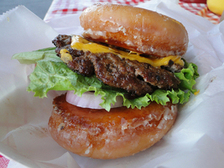
YOU EAT DONUTS AND ICE CREAM? BUT YOU'RE RIPPED!
Why "Clean" Eating is a myth, and why your diet must be FLEXIBLE in order to be SUSTAINABLE. (and yes, that is a hamburger with donuts for buns)
Why "Clean" Eating is a myth, and why your diet must be FLEXIBLE in order to be SUSTAINABLE. (and yes, that is a hamburger with donuts for buns)

HOW MUCH A WOMAN SHOULD BE EATING FOR FAT LOSS: THE DEFINITIVE GUIDE
And by “definitive guide”, in reality I mean it’s more like the “it depends guide.”
I apologize to anyone who came here looking for a specific and exact fat loss plan for women.
..KEEP READING
And by “definitive guide”, in reality I mean it’s more like the “it depends guide.”
I apologize to anyone who came here looking for a specific and exact fat loss plan for women.
..KEEP READING
